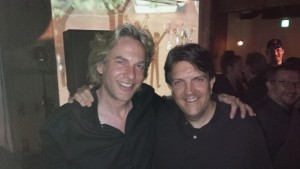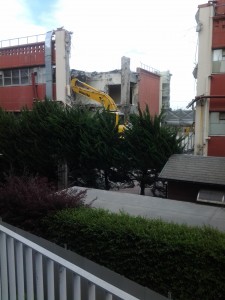Special Note: Although I usually don’t do this, I slightly updated yesterday’s post to clarify the Albanian X-Ray and which bloodletting left me with a bruise.
Since yesterday I talked about getting an X-Ray in Albania, today I thought I’d explain why it was necessary. First you have to understand that among all my other physical oddities, I’m also cursed with weird feet. Besides being flat-footed, I’m also one of the 10 percent of the Earth’s population to have Morton’s Foot (also Morton’s Toe). Basically, my second toe is longer than my big toe. (Or vice versa, I guess.) This has a few minor effects that add up.
First, most of of my weight is supported on one of the narrow bones in my foot and not on the largest bone. This causes me to walk, at least on my left side, with the outside of my foot hitting first and then everything rolls in. Because of this I tend to wear out the soles of my left shoes fairly quickly. Because the weight is supported on the narrower bones, I have to be careful of stress fractures. In fact, I had one in the months leading up to my Air Force Officer Training and it made it difficult to train and get in shape.
Second, I also tend to swing my left foot as I walk. My foot comes forward slightly sideways until my heel hits and my foot rolls in. If I’m not careful when I’m walking barefoot, and apparently, as you’ll see, I’m not, I tend to catch The Little Piggy Who Had None and The Little Piggy Who Went Whee Whee Whee All The Way Home on things around the house. The result has been three nasty injuries.
I did that once back at Kansas State and ended up with an impressive bruise. I did it again when I was in Albania. As soon as the Peace Corps nurse saw it she decided to send me off for scientific experiments in the room of mad scientist equipment. I should also add that they took three X-Rays. After the second I asked about a lead apron and the Albanian staff member just said “No problem.” (When someone who works with radiation dismisses you with “no problem”, you’ve probably got a problem.) It turned out my toe wasn’t broken, just bruised.
The third time happened in Japan when I clipped my bread maker, which had been stowed away under the table, but not carefully. I put a dent in the bread maker and could tell by the angle of the Little Piggy Who Had None (who had suddenly become The Little Piggy Who Went Holy F@3king S%#t That Hurt) that it was broken. An X-Ray confirmed that.
I then had the unique experience of getting half a cast on my foot. Make a plaster cone and stick it over the end of your foot and that’s the cast I got. The doctor then said “Go Ye Forth etcetera etcetera”. I took two steps and it felt as if my left foot was trying to go up hill while my right was on flat earth. I asked if I was going to get a special shoe and he looked at me as if he wondered why I was till there and simply sent me to a shoe store.
As result, I turned down the chance to go to a movie, although it turned out that fate was on my side. The movie was “Star Wars: Episode One — Really, George? Really?” I also, though, missed a chance at a final beach party which apparently involved skinny dipping and lots of people with cameras.
The funny part is, I stopped wearing the cast after two days. It was too much of a pain.







